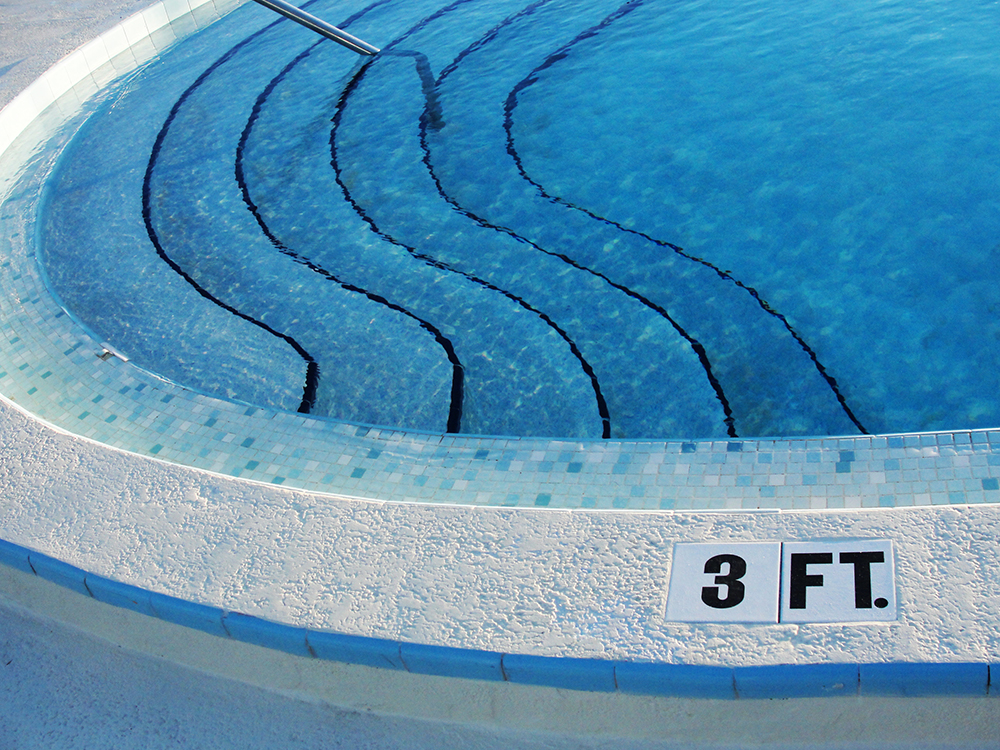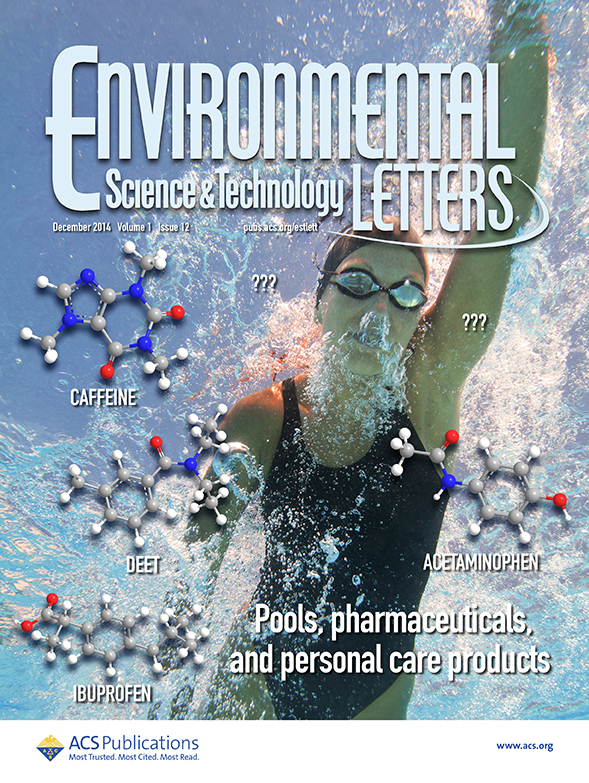
 (Photo Courtesy of Alicia Hylton via FreeImages.com.) |
When the weather warms and you dive into the public pool to cool off, School of Civil and Environmental Engineering (CEE) researchers have found you’ll be swimming with more than your fellow bathers.
Think: small amounts of pesticides, flame retardant and even caffeine.
The concentrations are nowhere near dangerous levels, but the researchers say their presence is worth noting.
 (Courtesy of Environmental Science & Technology Letters.) |
“The findings highlight the need for people to bathe before swimming and avoid urinating in pools,” said Ching-Hua Huang, a CEE professor and co-author of the study. “We also think that the practice of allowing pool water to recirculate for months or longer will allow some compounds to accumulate.”
Their paper, published this fall in Environmental Science & Technology Letters, is earning accolades from the journal. Editors made it the cover story of the December 9 issue and it was an ACS Publications Editors’ Choice in November. (That last bit of recognition means the paper is freely available online.)
The article, “The Presence of Pharmaceuticals and Personal Care Products in Swimming Pools,” was co-written by CEE post-doctoral researcher Peizhe Sun and visiting scholar Weiwei Ben along with Huang and collaborators at Purdue University.
Huang and Professor Ernest Blatchley at Purdue knew water-treatment facilities use techniques similar to public pools for cleaning potable water, and they knew previous studies had shown the presence of some pharmaceuticals and personal-care products in drinking water. They started to wonder if the same would be true in public pools.
They tested three indoor swimming pools — at universities in Georgia and Indiana and at an Indiana high school. And they found measureable levels of DEET, the main ingredient in many insect repellants, as well as caffeine and TCEP, a flame retardant.
 Professor Ching-Hua Huang (right) with then-Ph.D. student Peizhe Sun. He is now a post-doctoral researcher in Huang's group. (Photo by Jess Hunt.) |
The authors note that DEET is mostly likely rinsed off swimmers’ skin when they enter the pool. “Caffeine could be introduced by human excretions (e.g., urine and sweat),” they wrote, “but the route of introduction of the flame retardant TCEP is unclear.”
The authors said most public pools recirculate the same water for months or years, depending on filtration and chlorination to clean it. But because DEET and caffeine are known to be largely unaffected by exposure to chlorine, they and other chemicals could accumulate in pools over long periods of time.
“Other externally applied medications or other topical agents (e.g., lotions, perfumes and cosmetics, which were not investigated in this study) may also be expected to enter pools via a similar pathway,” Huang and her co-authors wrote. “The effects of introduction of these chemicals into pools are largely undefined but may merit investigation.”
Huang and a researcher in Wisconsin are planning a larger survey of pools next spring and summer in a project supported by the National Swimming Pool Foundation.
“This study will likely generate more comprehensive data that will help us better understand how pool systems and swimmer behaviors may affect the presence of these compounds in the water,” Huang said.
Read more about the research in Chemical and Engineering News.
